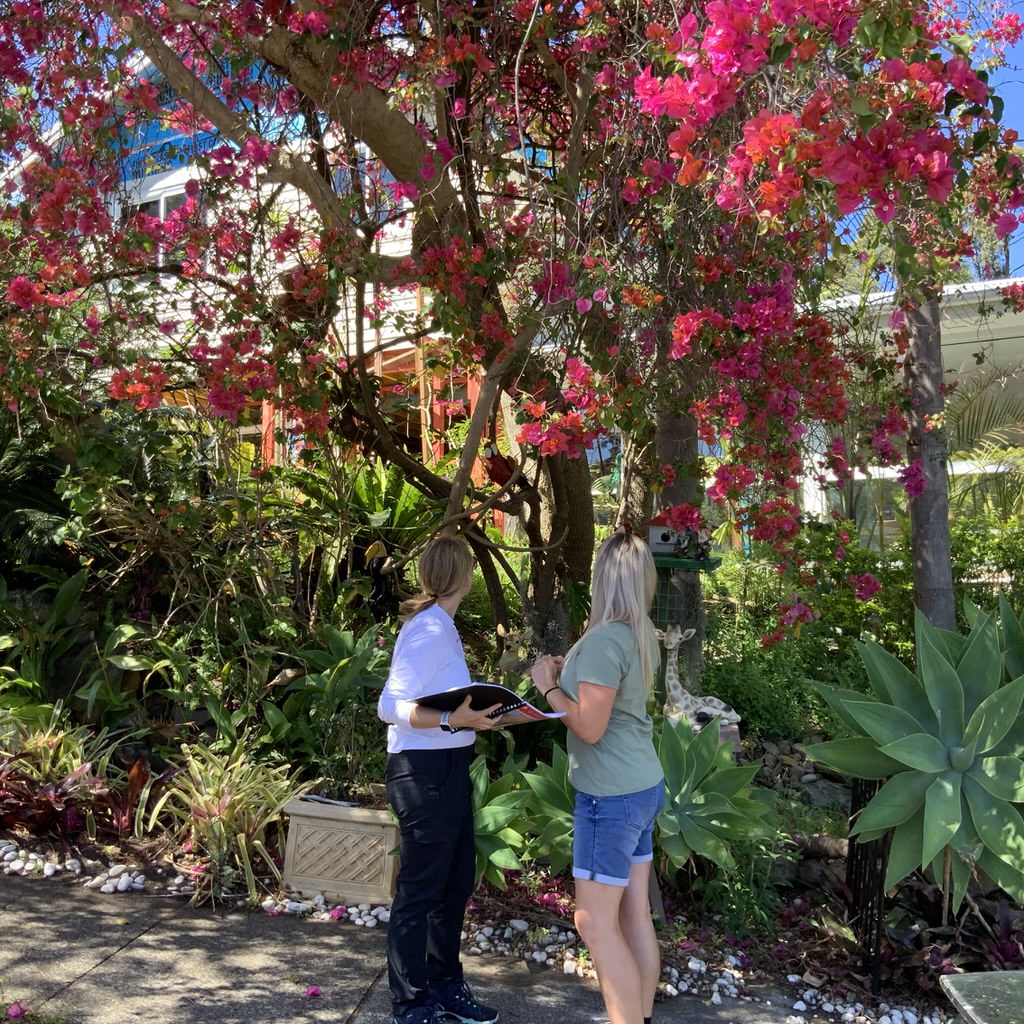
One of the philosophies that CR Bushfire look to incorporate in every job they undertake is to achieve the best outcome for people living in bushfire prone landscapes. That is one that balances protection and survivability with sought-after design, cost, and client character appeal. Whilst it should provide a safe refuge against bushfire impact, new development or retrofitting of existing properties does not need to not compromise desired aesthetics.
Critical thinking is vital in turning insights into actions.
To provide an example of “insight” application CR Bushfire was engaged to undertake a review of an existing Asset Protection Zone and provide a Management Plan that would satisfy Council requirements.
The site was located in the Sutherland LGA and was historically planted out by the previous owners to almost form an arboretum of mature tropical plants and Balinesian type aesthetics, a quality that attracted the new buyers.
Species ranged from Cocos Palms to Hibiscus, Giant Bird of Paradise, Variegated Ginger, Ferns, Cordyline, Bamboo, Cycads, Agaves, Birds Nest Ferns, and Murraya.
Application of Planning for Bushfire Protection (PBP) would suggest that a number of these species needed to be removed to maintain separation between canopy and shrubs and lessen potential fire spread.
Using vegetation, slope and distance parameters a likely fire scenario was modelled off the nearby reserve that would suggest the property may experience ember attack and lower levels of radiant heat. The property was a sufficient distance away to remove it from the threat of Flame contact.
Although the existing plantings did not strictly comply with the requirements of PBP they were arranged in clumps and garden beds separated by pathways, mown lawn, paved areas and water features. These species were also largely not native and not endemic to the local area so were serviced by an irrigation system that provided the necessary moisture to maintain species growth and survivability.
Due to their natural form and internal structure species planted on site also displayed fire resistant qualities that included large glossy leaves, high moisture content, low level of volatile oils, smooth bark, and no accumulation of dead leaves and stem material held within or around the plant.
In fact, the continued maintenance of these species in situ would arguably assist in trapping embers and sparks, reducing wind speed and slowing the travel of fire to the existing house.
A Management Plan was prepared that ultimately specified management of the existing impervious areas and vegetation without increasing plantings and suggestions for increased static water supply with pump and connections to the irrigation system to improve the properties defence.
The Clients were delighted that they could maintain the existing charm of the property whilst still employing techniques and design to maximise protection from bushfire impact.